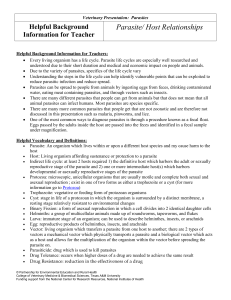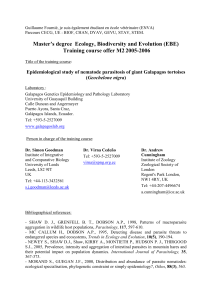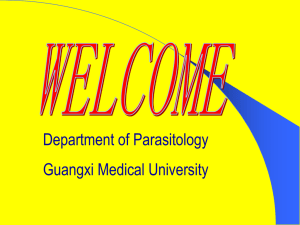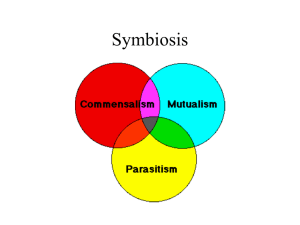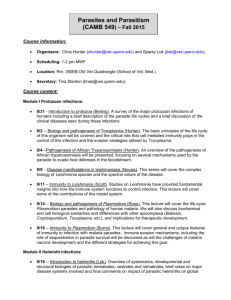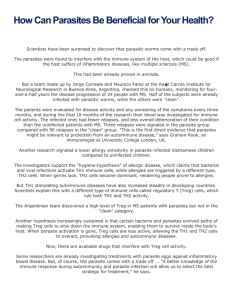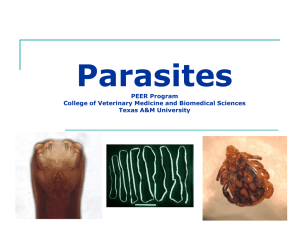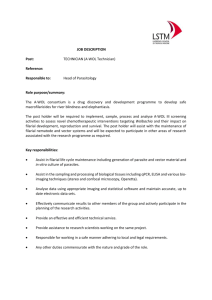L10-community-ecology
advertisement
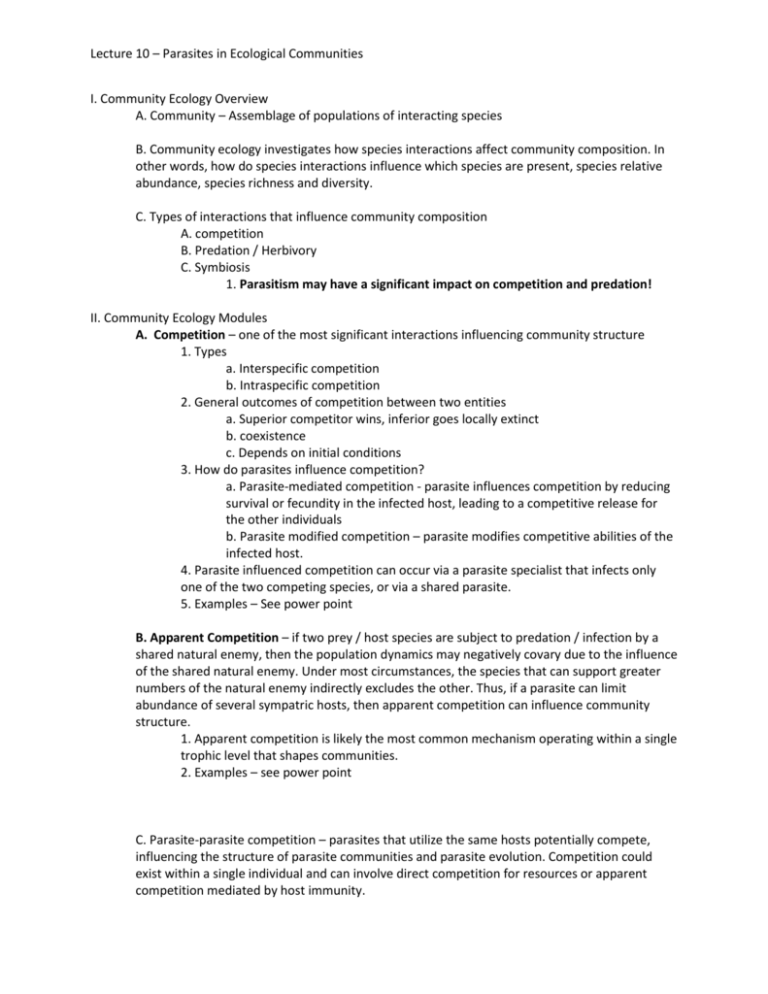
Lecture 10 – Parasites in Ecological Communities I. Community Ecology Overview A. Community – Assemblage of populations of interacting species B. Community ecology investigates how species interactions affect community composition. In other words, how do species interactions influence which species are present, species relative abundance, species richness and diversity. C. Types of interactions that influence community composition A. competition B. Predation / Herbivory C. Symbiosis 1. Parasitism may have a significant impact on competition and predation! II. Community Ecology Modules A. Competition – one of the most significant interactions influencing community structure 1. Types a. Interspecific competition b. Intraspecific competition 2. General outcomes of competition between two entities a. Superior competitor wins, inferior goes locally extinct b. coexistence c. Depends on initial conditions 3. How do parasites influence competition? a. Parasite-mediated competition - parasite influences competition by reducing survival or fecundity in the infected host, leading to a competitive release for the other individuals b. Parasite modified competition – parasite modifies competitive abilities of the infected host. 4. Parasite influenced competition can occur via a parasite specialist that infects only one of the two competing species, or via a shared parasite. 5. Examples – See power point B. Apparent Competition – if two prey / host species are subject to predation / infection by a shared natural enemy, then the population dynamics may negatively covary due to the influence of the shared natural enemy. Under most circumstances, the species that can support greater numbers of the natural enemy indirectly excludes the other. Thus, if a parasite can limit abundance of several sympatric hosts, then apparent competition can influence community structure. 1. Apparent competition is likely the most common mechanism operating within a single trophic level that shapes communities. 2. Examples – see power point C. Parasite-parasite competition – parasites that utilize the same hosts potentially compete, influencing the structure of parasite communities and parasite evolution. Competition could exist within a single individual and can involve direct competition for resources or apparent competition mediated by host immunity. Lecture 10 – Parasites in Ecological Communities 1. Examples – see power point D. Predation A. Differences between predation and parasitism 1. Predation (+/-) – When one organism (the predator) consumes either all or part of another organism (the prey), negatively affecting the prey and positively affecting the predator. 2. Parasitism (+/-) – when one organism (the parasite) causes harm to another organism (the host), negatively affecting the host and positively affecting the parasite. 3. The distinction between parasites and predators is somewhat blurred. In some instances, parasites can be considered predators and vice versa. B. Predatory / Parasite Keystone Effects 1. Keystone effect – if a host species that is superior in competition is more vulnerable to predation / parasitism, then the predator / parasite can allow for coexistence between the species. 2. Example – see power point. E. Food webs A. Food webs describe trophic interactions within communities, which provide insight into community structure, stability, energy flow and diversity 1. If a parasite can be viewed as a predator, then they are missing from a fundamental aspect of ecological theory: food webs 2. Important food web metrics: number of trophic levels, food chain length, species diversity, complexity (average number of links per species), connectance (percentage of possible links realized). Increased connectance / complexity / diversity tends to increase food web stability a. Adding parasites to food web increases connectance, complexity and diversity, stabilizing food webs. b. Interestingly, parasites infected the most common species in the middle of the food web. This promotes species diversity at lower trophic levels by alleviating predation stress and/or facilitating species coexistence.Thus, parasites might also facilitate community diversity!

